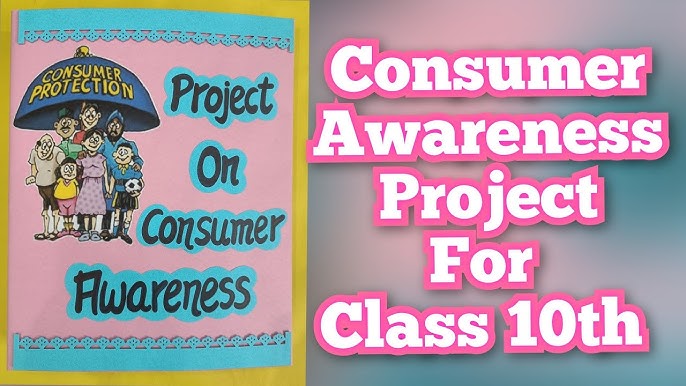Consumer Awareness Project Class 10: An Essential Guide
Understanding consumer rights and responsibilities is crucial for every student, especially when preparing a Consumer Awareness Project for Class 10. This guide will not only help you craft a project that aligns with the curriculum but also empower you with the knowledge of consumer protection laws and the importance of consumer education.
What is consumer awareness?
Consumer awareness refers to the understanding that consumers should have about their rights, the products they purchase, and how they can protect themselves from exploitation. As part of the CBSE Class 10 Consumer Awareness Project, students are expected to explore these concepts through practical examples and research.
Key Elements of a Consumer Awareness Project for Class 10
When working on your Consumer Awareness Project Ideas Class 10, you should focus on a few key aspects:
- Consumer Rights: Study the various rights a consumer has, including the right to safety, information, choice, and redress.
- Consumer Responsibilities: Understand the duties consumers have, such as paying for goods, using products correctly, and being honest in the marketplace.
- Consumer Protection Act 1986: One of the most important aspects to cover is the Consumer Protection Act 1986, Class 10. This law safeguards the interests of consumers in India, and a thorough understanding of its provisions will add depth to your project.
Creating a Detailed Consumer Awareness Class 10 Project
- Introduction to Consumer Rights: Start by introducing the concept of consumer rights and why they are important.
- Use real-life examples or case studies to demonstrate how individuals violate consumer rights and how consumers can protect themselves.
- Role of Government: Discuss the role of the government and agencies like the Consumer Protection Council in promoting consumer awareness.
- Consumer Education: Discuss how the curriculum integrates consumer education in Class 10 to teach students about their rights and responsibilities.
Useful Tips for Your Project
- Research Thoroughly: To make your project comprehensive, refer to multiple sources, including books, websites, and research papers, that discuss consumer rights and responsibilities in class 10.
- Visual Aids: Include graphs, charts, or images to support your points. This will make your project more engaging.
- Report Structure: Ensure that your project follows a clear structure: Introduction, Methodology, Case Studies, Analysis, and Conclusion.
Conclusion
By focusing on consumer rights, responsibilities, and education, you will contribute to spreading awareness about consumer protection, which is essential in today’s marketplace.
Karnataka Traditional Dress
Karnataka’s traditional dress reflects the state’s rich cultural heritage and diversity. For men, the traditional attire is the “dhoti” paired with a kurta or a “kurta-pajama.” In addition, the “sherwani” or “lungi” is commonly worn for formal occasions. Women in Karnataka often wear the “saree” in various styles, with the “Mysore silk saree” being especially famous. The saree is paired with a blouse and accessorized with intricate jewelry, adding elegance to the attire. Karnataka’s traditional dress is an important part of its identity, symbolizing grace and the cultural vibrancy of the region.






[…] Consumer Awareness Project Class 10 […]